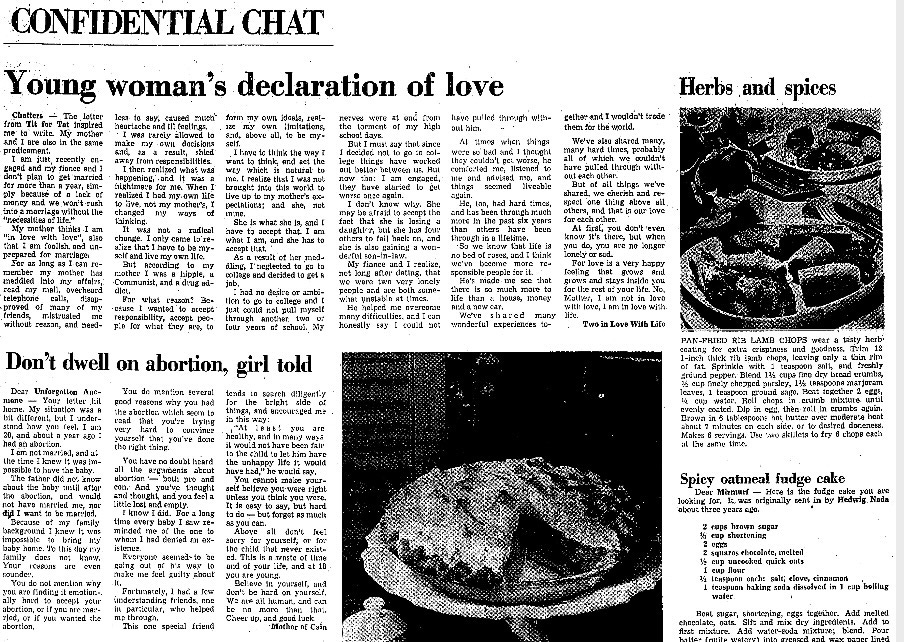
Reproductive justice took center stage on the first night of the Democratic National Convention as three women described the dangers of state abortion bans. They did so with detailed accounts of their own difficult pregnancies. Two were denied emergency care, one during premature labor and the other during a miscarriage. The third was raped by her stepfather and would have been barred from obtaining an abortion under many of the laws enacted since the fall of Roe v. Wade.
Inviting these women to the convention was tactical. Abortion access is a big part of the Democrats’ platform, one the party believes will help it win this fall. But creating space for such stories also allowed for an especially high-profile version of the kind of consciousness raising that was a staple of second-wave feminism. The concept — which used story sharing groups to help women understand how “the personal is political” — was popularized by the feminist press in the late 1960s and early 1970s. It typically took place in living rooms, classrooms and women’s health clinics, but also crossed into public with testimonials at rallies and marches. Print media played an amplifying role, too, by creating venues for women to share their stories via interactive features such as letters to the editor and advice columns.
It might seem odd to associate ink and newsprint with interactivity, a term commonly applied to digital spaces, but reader participation dates back long before the Internet. As historian Julie Golia writes in her book, Newspaper Confessions: A History of Advice Columns in a Pre-Internet Age, much of this early mass media engagement was driven by women:
“Publishers and female readers alike loved advice columns because of their interactivity. Newspaper executives recognized that the serial nature of the columns could help them build loyal, long-term customers who turned to the woman’s page each day to follow ongoing conversations, look for updates from regular correspondents, and write in themselves… women readers seized on the interactivity of advice columns to transform woman’s pages into communities where their voices could be heard.”
One prominent example of this type of community building comes from the Boston Globe which, for more than a century, published a recurring and popular feature called Confidential Chat. While typical advice columns relied on a single, wisdom-dispensing personality, the Chat was built entirely on reader-generated content. Contributors, who called themselves Chatters and signed their letters with pseudonyms, shared their problems, asked for advice and offered each other solutions. A group of editors handled copious volumes of Chat mail, kept secret files connecting each pseudonym with a real person and organized submissions into daily digests that appeared on the Globe’s women’s pages. The whole thing functioned similarly to a subreddit or Facebook discussion group, albeit at much slower speeds and with better copy editing.
During the 1960s and 1970s, the Chat became a venue for public consciousness raising around reproductive health. Protected by the anonymity of their pseudonyms, Chatters broke from their usual discussions of housekeeping and cooking to share personal details about miscarriages, pregnancy, abortion and contraception — topics that were taboo during that era, especially in heavily Catholic Boston. (For more on the history of Confidential Chat, see this paper I wrote with my former graduate student Arden Bastia.)
Unplanned pregnancies were common and, for some of the women who wrote to the Chat, had devastating consequences. One Chatter, who used the pseudonym “Heavy Heart” wrote about how she’d had to drop out of nursing school and get married when she became pregnant at age 18. “I am living in misery all the time as I don’t love my husband.”
Another woman replied with a similar story. She, too, had been forced to get married when she got pregnant in her teens. “I am now 24 and the mother of four. I, too, have discovered that I do not love my husband… I am sad and lonely and sick. I talked with a priest who told me that, because there were children involved, I had no right to think of myself.”
Many of the conversations that played out in the Chat during this time should be familiar to modern audiences. One Chatter advocated for easy access to contraception and disclosed she’d had multiple abortions after becoming pregnant due to rape. “An unwanted pregnancy is totally destructive to a woman’s well-being. I know—I’ve been there four times.”
Another writer described the abortion she’d sought after learning her fetus showed signs of deformities. (Although the letter doesn’t disclose where she obtained an abortion, it’s worth noting that the procedure was heavily restricted in Massachusetts at the time.) “Emotionally, I’m finding it hard,” she wrote. “I need some understanding.”
Nearly 60 years separate the women who wrote these letters and the women who stood on the stage at the DNC. The media environments through which their stories travel are vastly different. But they all publicly grapple with the very personal consequences of a political establishment that has for too long devalued their voices and failed to recognize the suffering that occurs when women cannot choose.
Benevolent Nepotism 🎨🎨🎨
Art is another powerful tool for consciousness raising. To see what I mean, check out Vote For Your Daughter, a public art campaign created by my brilliant cousin Maggie O’Neill.



